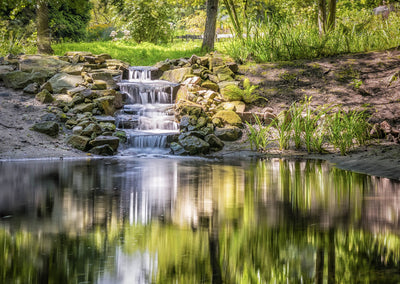Fall Composting & Mulching

It's no secret the importance of fall and spring composting and mulching but the very practice itself can be greatly satisfying not to mention endlessly educational. Unfortunately, healthy soils are increasingly damaged or destroyed by a number of improper gardening and farming techniques. However, a greater number of people are learning about and employing appropriate composting and mulching practices.
Finished or mature compost is added to and sometimes mixed into existing soil whereas mulch is added to the surface and is often laid over compost. Good compost is a living material that is full of nutrients and microbiology which together create a potent elixir for optimum plant growth. To use it however, it must be mature otherwise it can temporarily reduce certain nutrients like nitrogen (N) and oxygen (O), add viable weed seeds, burn plants or harm plant growth in other ways and, promote pests and diseases. Ensure your "mature" compost smells earthy - not sour or like ammonia, does not produce heat after it is turned or wetted down and, is colored dark brown,
Organic Mulches decompose over time thus readily and consistently provide food for soil organisms and plants. Below is small list of potential mulches you can use in your garden:
- Hardwood chips for around trees, shrubs and in perennial beds
- Softwood chips (usually pine) for around large trees and shrubs
- Bark mulch
- Cocoa chips
- Composted (not fresh) animal manure
- Wood nuggets
- Evergreen needles
- Untreated and dried grass clippings
- Untreated newspaper or corrugated cardboard
- Shredded leaves
- Straw (clean, non-GMO wheat, barley or oat) not hay
Inorganic Mulches, on the other hand, do not decompose and are used mainly for decorative uses and/or for controlling weeds. Many inorganic mulches, due to their ability to absorb and hold heat, have the advantage of warming the soil for early spring planting.Be careful however - over-heated inorganic mulches can be detrimental for plants during periods of hot, dry weather.
- Rock
- Stone
- Lava rock
- Crusher dust
- Pulverized rubber
- Landscape plastics or fabrics
Fall organic mulch is much like spring mulch in that it retains soil moisture, protects bare soil from erosion, keeps plant roots relatively warm, feeds hungry microbes and the rest of the soil food web and suppresses weed growth. Interestingly mulching can also remove the residual effects of many pesticides, fertilizers and heavy metals. And of course, appropriate mulch looks great in the garden.
Together, composting and mulching can save you time, money and energy when spring arrives. Once you have added compost and then mulch, nature takes it from there. Even when snow and ice cloak the landscape, warmer areas in the soil still allow for some root growth and biological activity.
When deciding on what kind of mulch to use for your garden, consider a material(s) that best suits your landscaping project or garden. Think about local availability, cost, appearance, quality and durability. Don't forget to also consider the climate in which you live. For example, the Okanagan can get very hot and dry, especially during drought periods and climate change is certainly playing a large factor in this. Mulches that hold heat can contribute to plant scald and sometimes plant death. In designing your garden projects, consider adding heat retaining, darker mulches to shaded garden areas and lighter, less heat absorptive mulches to areas receiving greatest sunlight.
A note of caution. Understand that you can have too much of good thing. Over-mulching or over-composting can lead to problems with root rot and insect and rodent infestation. Mulch and compost that is layered too deep can cause a build up of excess moisture in the root zone which ultimately, can lead to roots rotting. In addition, avoid adding mulch and compost against plant stems and tree trunks. The roots of most terrestrial plants need to be able to breathe; adding materials too close to plants can suffocate them and in time, kill the plant. Tree roots growing under a heavy mat of mulch or compost or both, send up roots to try to breath. These can start to encircle a plant and in time, strangle it (called root girdling). Most landscapers recommend adding only 2-4 inches of mulch to a bed and keep it about a foot away from the stem or trunk.
![]() October is the month that KHS Landscape Professionals schedules and employs fall clean ups and provides helpful tips to homeowners on how they can prepare their soils for excellent spring planting. If you would like your gardens winterized, give us a call. Fall clean ups include:
October is the month that KHS Landscape Professionals schedules and employs fall clean ups and provides helpful tips to homeowners on how they can prepare their soils for excellent spring planting. If you would like your gardens winterized, give us a call. Fall clean ups include:
- Planting garlic and readying vegetable gardens for spring
- Weeding and Cutting back Perennials and Grasses
- Blowing/Raking/Removing Debris
- Mowing/trimming if needed
- Winter Planter Building
- Planter Winterization
- Edging Gardens
- Pruning





